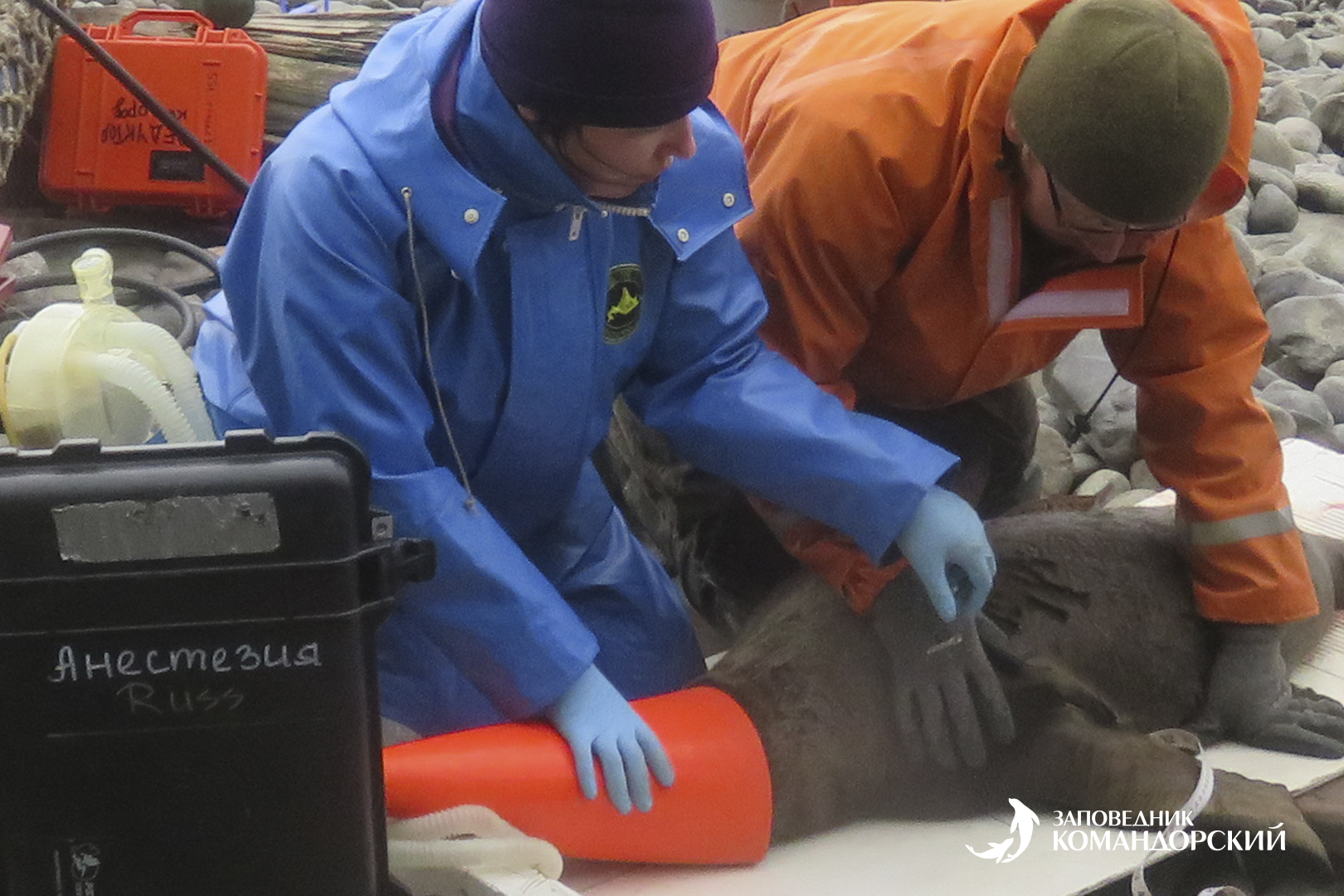Scientific group of Kamchatka branch of the Pacific Institute of Geography, Far Eastern Branch of the Russian Academy of Sciences under the leadership of the leading researcher, Ph.D. Vladimir Burkanov set tags for 100 pups of the northern sea lion, listed in the Red Book of Russia. The work was carried out at the Yugo-Vostochnoye rookery on Medny Island, the largest reproductive sea lion rookery in Kamchatka Krai.
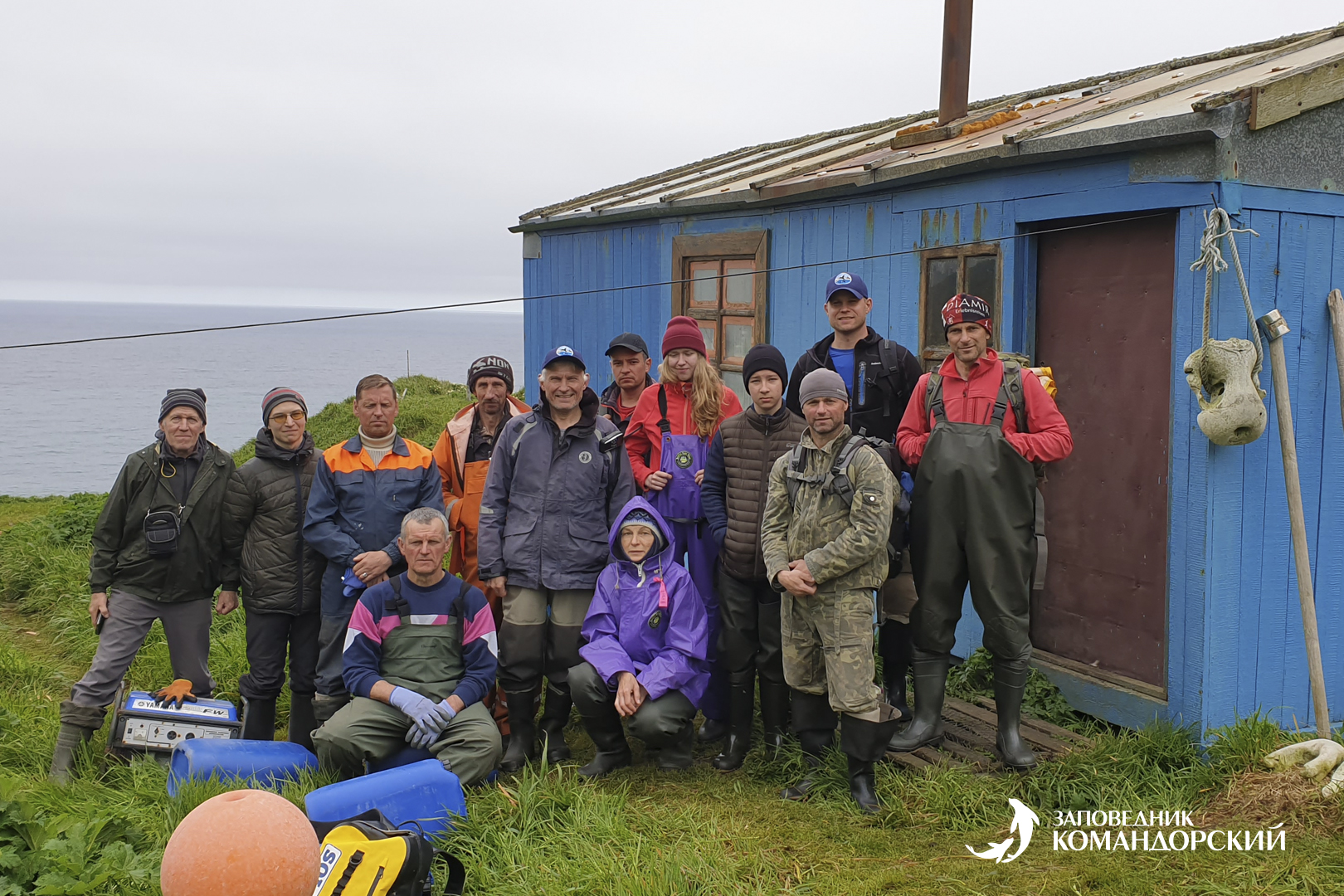
Scientific group of the KB TIG FEB RAS on Medny Island Photo - KB TIG FEB RAS
The specialists of the institute have applied the method of hot branding well-developed and widespread both in Russia and abroad. Pups were labeled under gas anesthesia using isoflorane as anesthetic. The puppies were caught on the shore with nets, brought to the place of branding, weighed on an electronic dynamometer, and anesthetic was applied. Anesthesia came in 2-3 minutes. The brand was placed on the left side in the shoulder area.
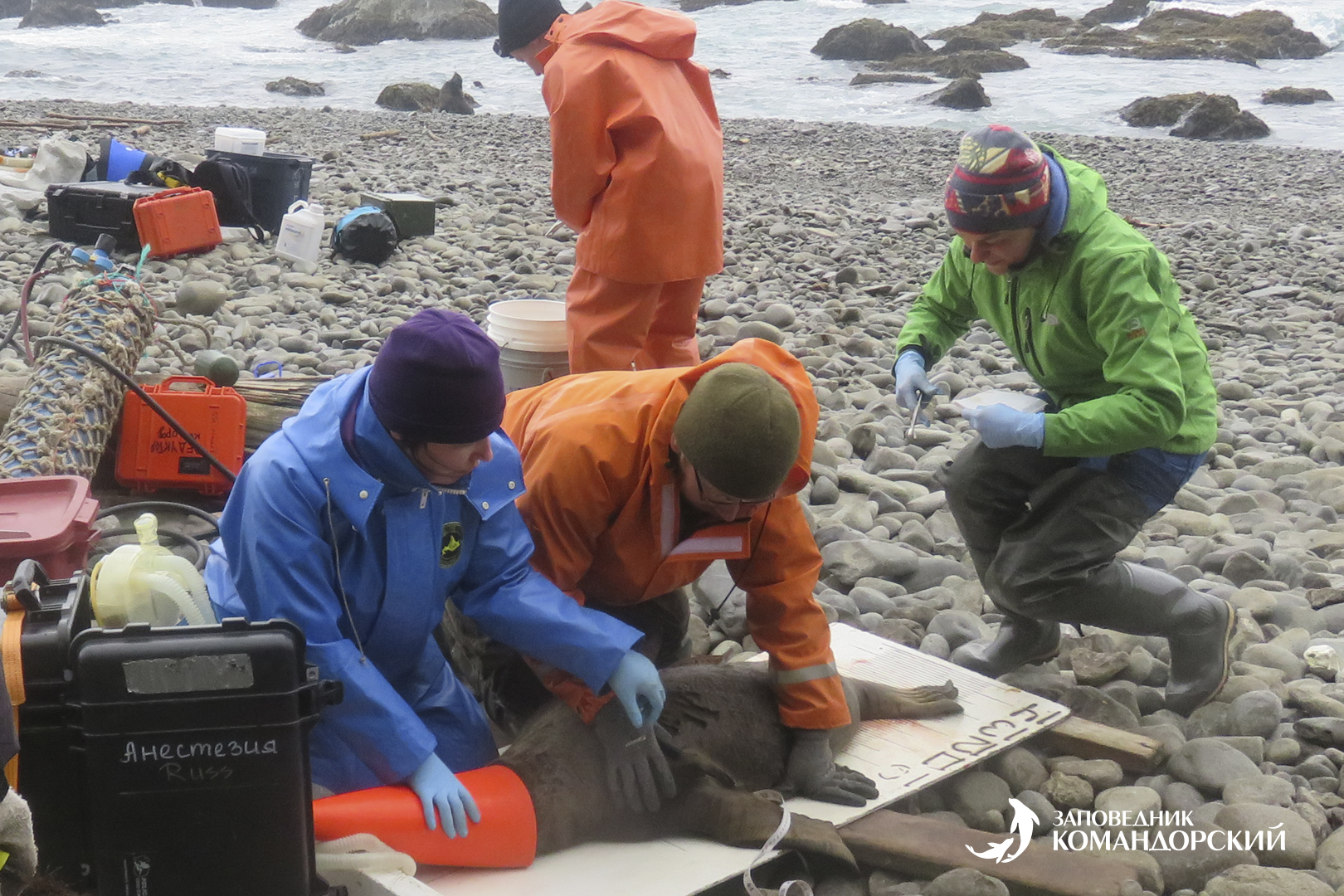
Preparation of the sea lion for branding with the use of gas anesthesia. Photo - KF TIG FEB RAS
The first plastic tags were installed on Medny Island in 1991. At the same time, large-scale international work began to study the biology of this Red Data Book species - its behavior, distribution and numbers. For 30 years of work, the hot branding method has established itself as the most reliable. It allows you to trace the migration routes of animals throughout their lives. Thus, it became known about the places of seasonal migration of females with pups from the Commander Islands to the eastern coast of Kamchatka and back.
The same marked males, born on the territory of the reserve, were repeatedly observed in the northern part of the Bering Sea on the rookeries of St. Lawrence Islands, Pribilof Islands on Attu, Agattu, Amchitka, in Bristol Bay and near Kenai Peninsula (the USA) and returned back to Yugo-Vostochnoye rookery.
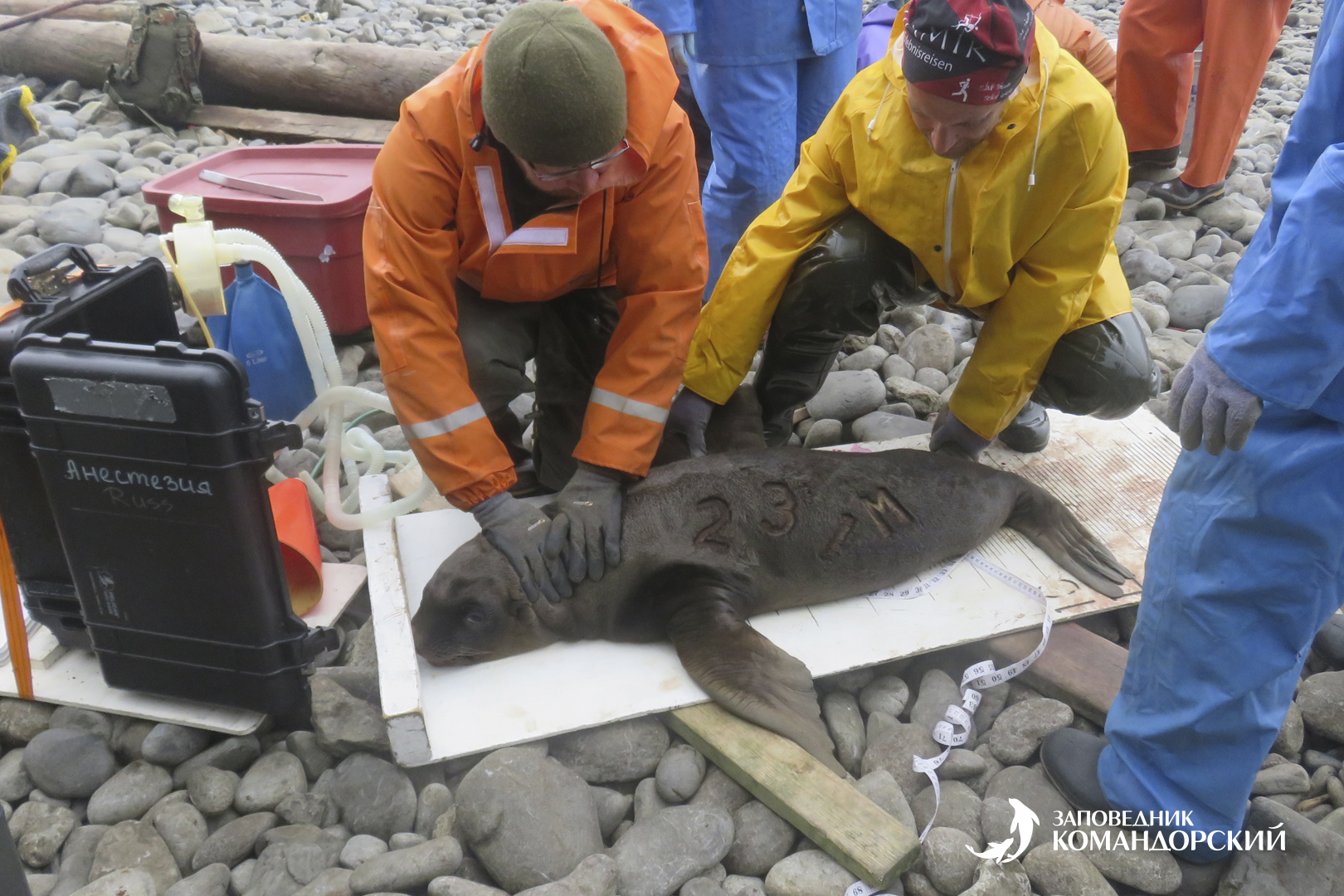
Northern sea lion with a brand. Photo - KB TIG FEB RAS
According to experts, the satellite tagging method allows you to find out in the short term some features of the species biology, for example, their preferred places of rest, feeding, specific routes of movement, duration of an individual's stay in a particular place, depending on the installed sensors, you can learn about the depth of diving. movement speed, hunting frequency and much more. However, satellite tags are kept on animals for no more than a few months, and more often less, therefore satellite tagging cannot replaces the branding method, it is only an addition to it.
The need for research is related to the continuously decreasing numbers of the animal. Until the end of the 20th century, the number of pups and reproductively active animals on the Commander Islands had been increasing, and the main breeding ground was on Yugo-Vostochnoye rookery on Medny Island, which to this day is the largest reproductive rookery in Kamchatka Krai. But in 1999 the situation changed, the number of offspring decreased by 33% and subsequently continued to decline. After 2010, the Commander population recovered by about half, and then began to decline again. In some years it increased again, but never reached the 1999 level.
In 2020, in addition to tagging work, the scientific group of the Kamchatka branch of the Pacific Institute of Geography, Far East Branch Russian Academy of Sciences recorded the lowest number of offspring in the Yugo-Vostochnoye rookery. At the same time, the researchers of the CINBR noted an increase in the birth rate on Bering Island, where 24 sea lion pups were registered and noted high numbers on small island of Ary Kamen, where 9 sea lion pups were born.
“Over the past 10 years, we have seen a gradual transition of sea lions from Yugo-Vostochnoye rookery to other rookeries of the Commander Islands. Every year we observe newborn pups on Severnoye and Severo-Vostochnoye rookeries. They periodically appear on the island of Ary Kamen. The total birth rate on the islands remained at the level of previous years, but the animals were redistributed among the rookeries,” said Evgeny Mamaev, Deputy Director for Science in the CINBR.
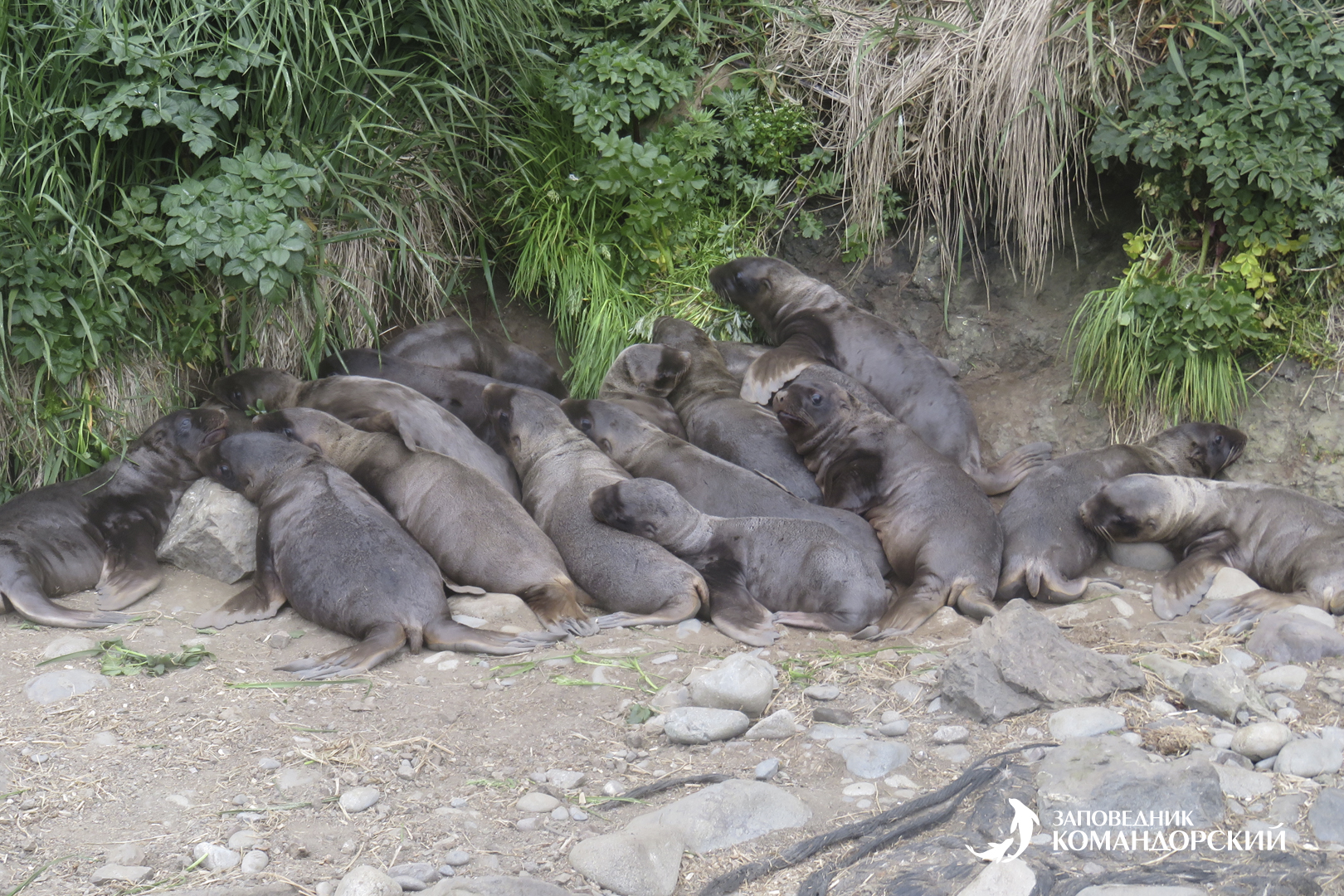
Northern sea lion pups. Photo - KF TIG FEB RAS
In the Red Data Book, the sea lion is in the category of a species, the number of which is steadily decreasing throughout the entire range for unknown reasons. Scientists put forward different hypotheses as to what could have caused such negative dynamics. One of them is the deterioration of the food supply. At the same time, the waters of the Commander Islands, as well as Cape Kozlov, are not fishing zones and belong to specially protected natural areas. For example, in the waters of the Commander Islands Nature Reserve, intensive fishing has not been conducted since 1985. The researchers suggest that the deterioration of the food base could be caused by global climate change.
“The sea lion is an indicator of the state of the ocean ecosystem. Probably, the living conditions, the feeding conditions of animals are worsening here. And the main reason may be related to climate change. With global warming, the ocean ecosystem is being rebuilt. In the area of the Commander Islands, possibly in the area of the Kamchatka Peninsula, and even the Kuril Islands. Probably, this reason primarily affects the state of the number and condition of the sea lion population in this vast region, since we observe such a negative trend on the Russian side, and at the same time on the American side"- noted the candidate of biological sciences, head of the scientific group of the Kamchatka branch of the Federal State Budgetary Institution of Science Pacific Institute of Geography, Far East Branch, Russian Academy of Sciences Vladimir Burkanov.
The northern sea lion is the largest representative of the eared seal family. The animal is the only species in the genus, and is also endemic to the North Pacific. The species was first described by Georg Steller on the Commander Islands. It is currently listed in the Red Book in the category of endangered species.









